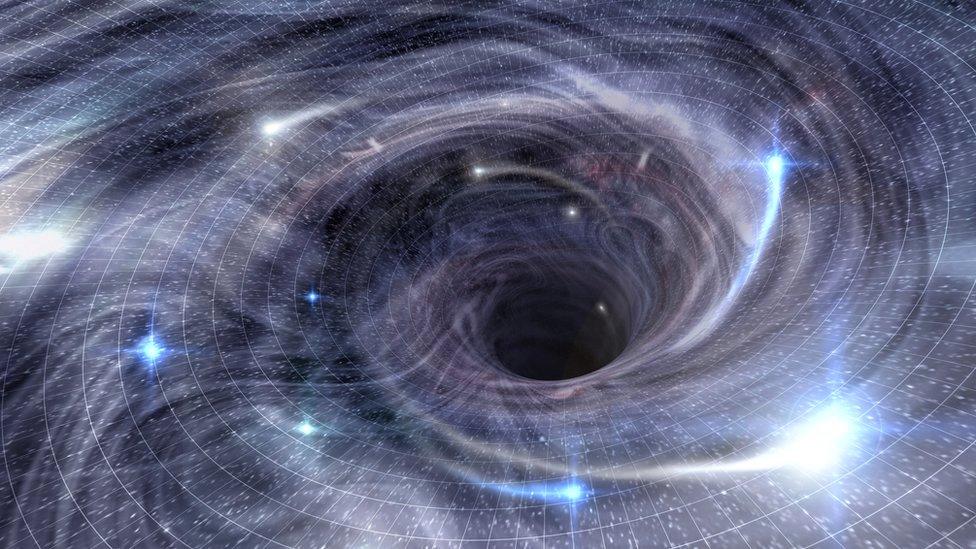Detecting gravitational waves caused by black holes
- Published
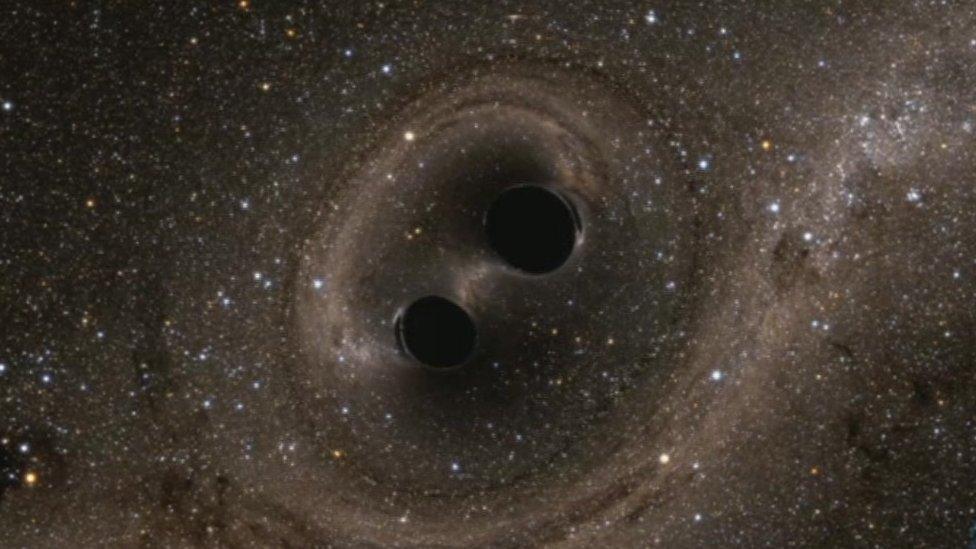
An artist's impression of two black holes locked in a death spiral
If I'm honest, I was a bit jealous when gravitational waves were discovered. One hundred years after Einstein said they existed, researchers from the University of Birmingham throw the switch on their big new detector and find gravitational waves on day one.
I mean, who does science like that? That's just showing off.
I wrote about the discovery back in 2016. Click here for more details, but, long story short, physicists from the University of Birmingham are a key part of a 1,000-strong global team behind the LIGO gravitational waves experiment. In Birmingham, they both helped build the actual detector and also analyse the data it produces.
Since the aim of LIGO was to prove the existence of gravitational waves and it did that on day one, what on earth have they been doing since then? And was that early result a fluke? Well now we know.
Violent cosmic events
First a quick word about gravitational waves themselves. These are ripples in the very fabric of the universe. Wobbles in actual space-time itself. They are only created by the most violent of cosmic events. In the case of the first signal detected by LIGO, they were generated by two black holes that were locked into a death spiral. Orbiting each other in ever decreasing circles before smashing into each other.
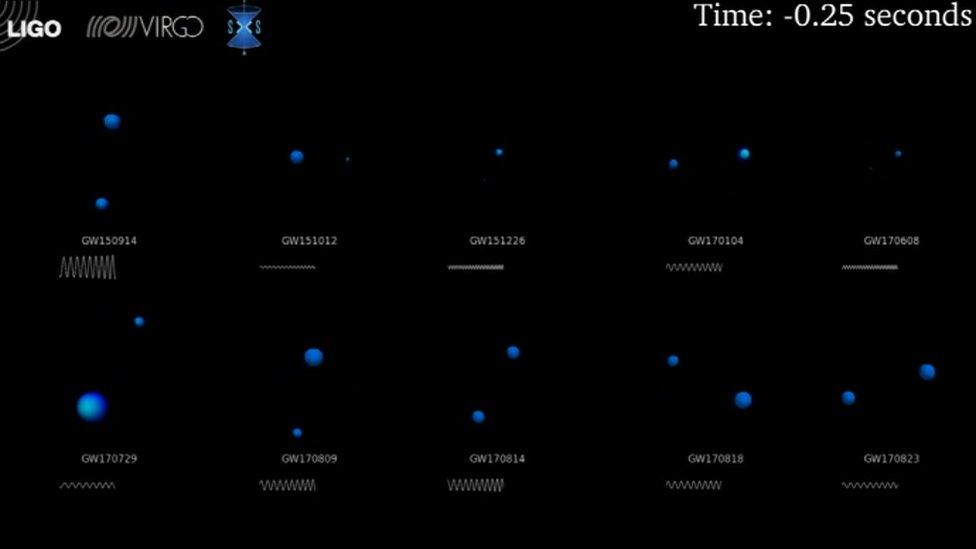
Ten different binary black hole events have now been discovered by LIGO
The LIGO team have now finished analysing all the data they took and revealed they have seen 10 similar events. A variety of pairs of black holes locked together and eventually joining in a violent release of energy. They've also seen a new type of event - a pair of neutron stars also doing the death spiral dance.
Cosmic black hole factory?
Every 15 minutes somewhere in the universe one of these extraordinary events takes place. That means there's a lot of binary black holes out there and something must be making them. The question for the LIGO team now is what is this cosmic black hole factory?
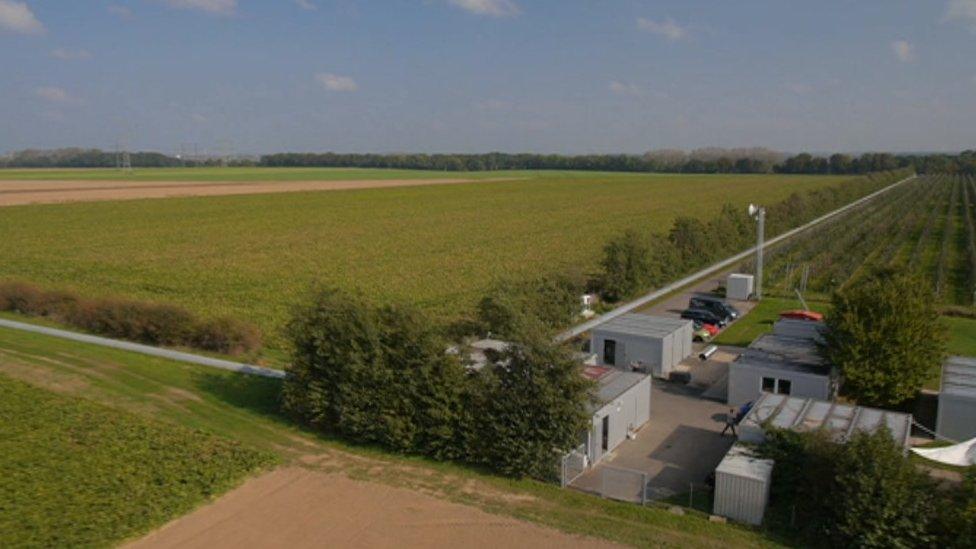
The LIGO experiment itself is based in America
Already in a Birmingham laboratory they're trying out new ideas for LIGO upgrades and then entire new telescopes. Because what the team have created isn't just a big machine to confirm ideas arising from Einstein's theory of general relativity, it is also an entirely new way to look at the universe. A radical new type of telescope for a radical new type of astronomy.
If you want to learn more about LIGO and black holes, the team have created a number of free apps for mobile phones and tablets (including a pocket black hole!) which you can find on this website., external
- Published3 December 2018
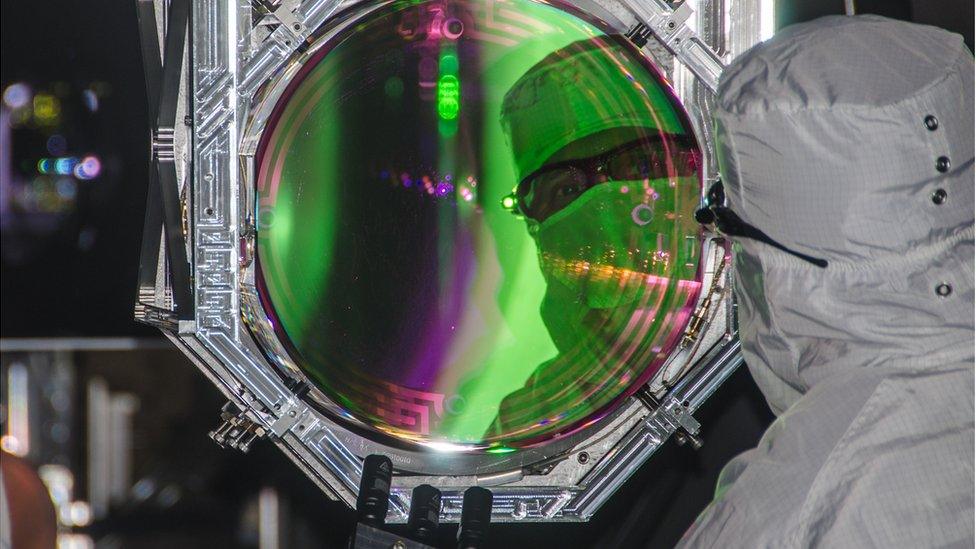
- Published26 July 2018
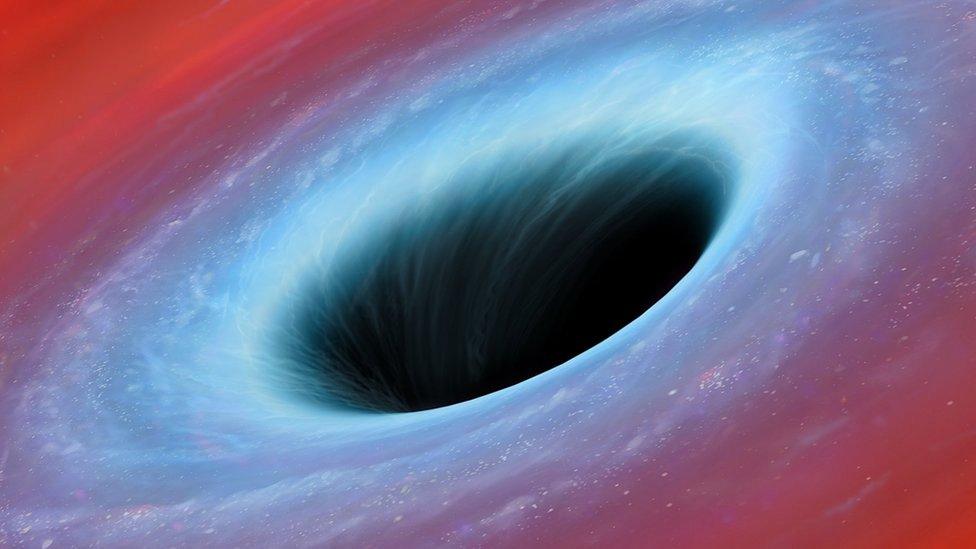
- Published4 April 2018
